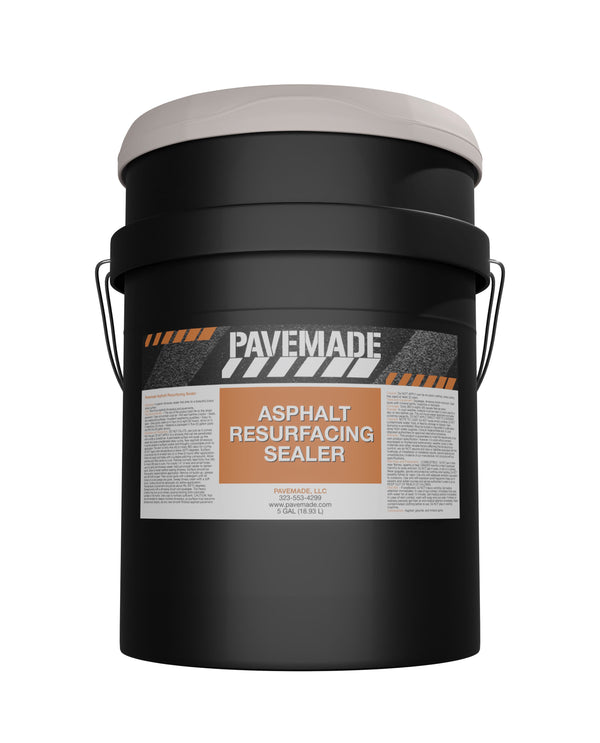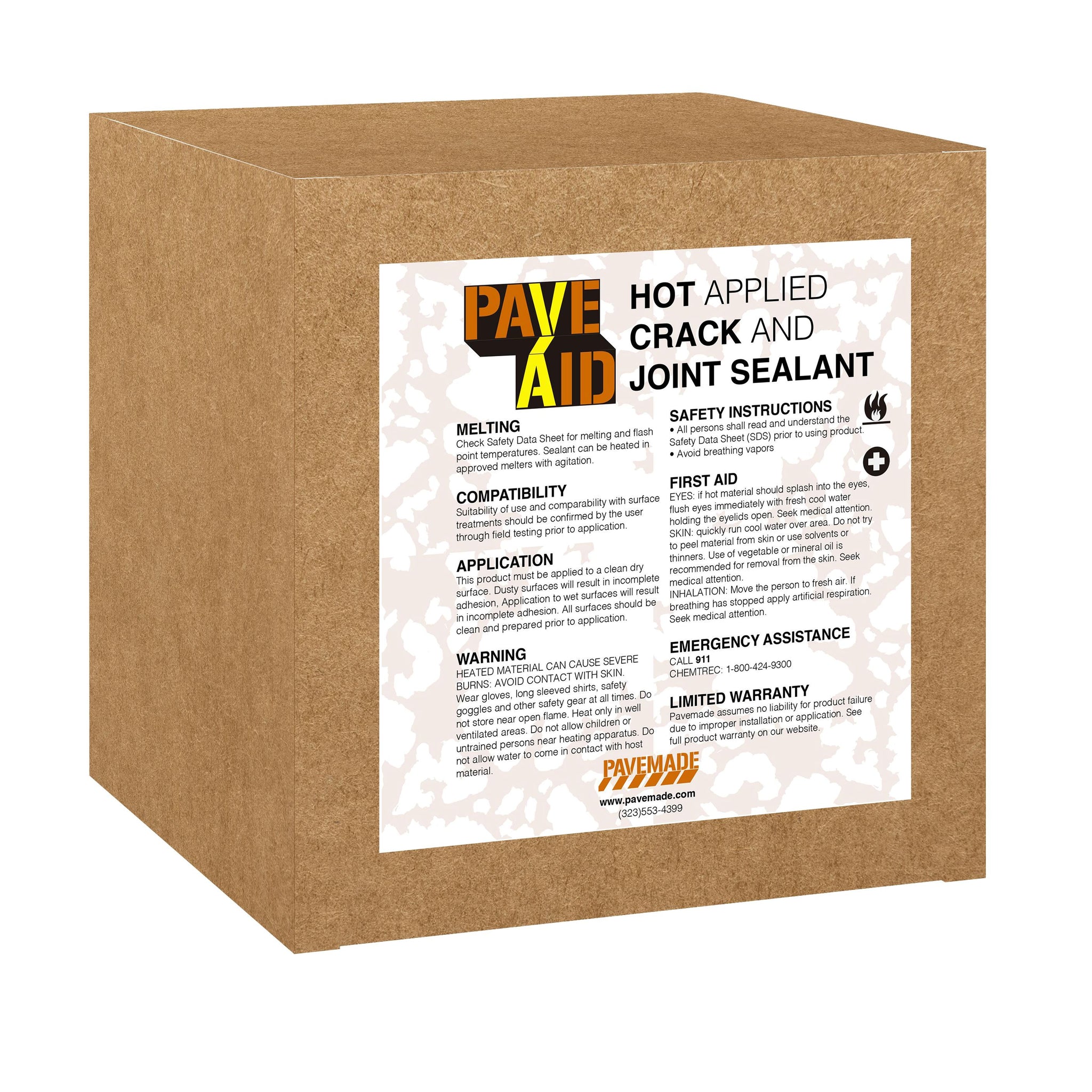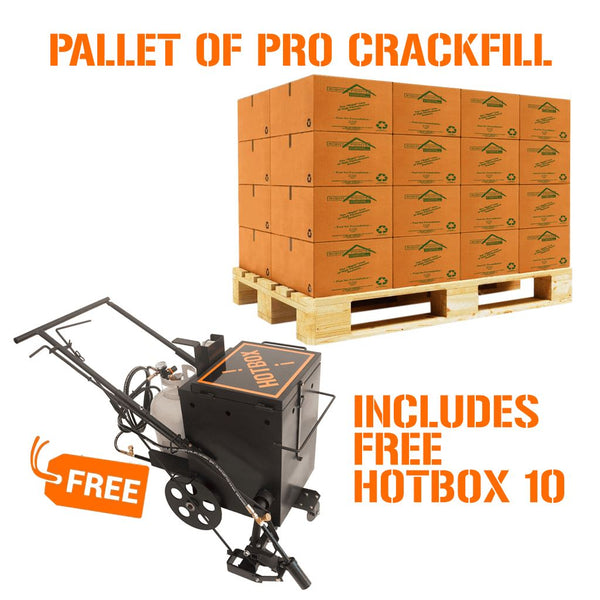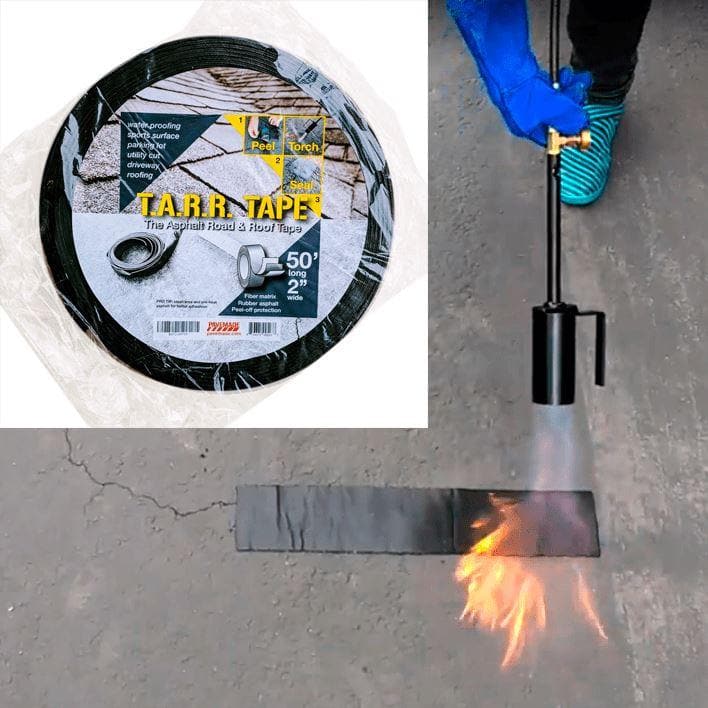Crack Fill Calculator
Sealcoat Needed:
Crack Filler Needed:
For sealcoat use 5 gallon premium driveway sealer
For cold crack fill use rubberized cold pour crack filler
For hot crack fill use easy-melt 20lb hot crack filler
For large project we recommend hot crack filler pallet with free applicator machine
For easy crack filling and utility cuts, we recommend asphalt tape
How much crack fill do I need?
It's easy to calculate how many pounds of crack filler you need: simply measure the total linear length of cracks you have in feet. Fill in the blank with the total linear feet of cracks and the calculator will return the number of pounds you need.
In most cases you want to first fill cracks that are deeper than 1/2'' with sand. Crack filler depth should be no more than 1/2'' deep for best performance. The reason you want to fill cracks is to stop water from getting into your pavement. Once water seeps into your pavement the damage to your pavement will accelerate. If water gets to the sub-base layer you will have erosion and your pavement will fall apart requiring you to do a complete re-pave.
How to Bid Crack Filling Projects
Bidding on crack filling projects can be a lucrative job, most black top projects require some amount of crack sealing. But first you need a clear understanding of the scope of work and how much your cost will be. Let's walk through a detailed case study to illustrate how to effectively use a crack fill calculator and prepare a competitive bid.
Case Study: Cost of Driveway Crack Filling
Project Overview: A homeowner has contacted your asphalt maintenance company to fill cracks in their 2,000 square foot driveway. The driveway has multiple cracks that need attention, and you need to provide an accurate estimate for the job.
Step 1: Calculate How Much Crack Filler You Need
Start by conducting a thorough inspection of the driveway. On the crack fill calculator map, draw out the driveway. Then select the severity of the cracking. The calculator will give you the estimate linear feet of cracks to be filled as well as how much asphalt crack filler you need.
Step 2: Calculate How Much It Costs
You can use hot crack filler or cold crack filler. If you are looking for the crack sealant to last for more than one season we recommend a hot pour crack filler. The pro is a good hot crack filler will easily last 5-10 years due to the high rubber content, the con is that it comes in solid form and you need to either spend time to torch and melt it into the crack or use a crack filling machine to apply it (much faster). For cold pour crack filler it is easy to apply as it comes in liquid form, but the con is that a lot of the content is just emulsified asphalt in water, the rubber content is minimal. And cold pour is usually more expensive per linear foot applied than hot crack fill.
Once you decide whether to use hot sealant or cold sealant, use the crack fill calculator above to estimate the crack sealant needed. Below is a rough estimate for large 1/2" wide by 1/2" deep cracks:
Cold crack fill: 5 gallon bucket covers 75 linear feet, that is about $2/ft.
Hot crack fill: 20lb block covers 120 linear feet, that is about $0.5/ft.
Step 3: Labor Costs to Fill Driveway Cracks
Next, estimate the labor required for the project. Based on industry standards, filling cracks with a crack filling machine or cold pour squeeze bottle takes approximately 1 hour per 100 feet of crack. For this project:
- Total crack length: 50 feet
- Estimated labor time: 1 hour
Assuming your labor rate is $75 per hour, the labor cost would be for every 50 feet of cracks. Again use the calculator above to estimate the amount of crack you have. Just pull up the map and estimate.
Step 4: Add Overheads and Profit Margin
Consider additional costs such as transportation, equipment rental, and profit margin. Let's estimate these as follows:
- Transportation and Fuel: $150
- Profit margin: 50%-100% of total cost
Calculate the total cost before adding the profit margin. Below is assuming for a moderately cracked driveway that uses 6 of our easy melt hot crack filler blocks.
- Material cost: $396
- Labor cost: $1,080
- Transportation and Miscellaneous: $150
- Total cost before profit: $1,626
Now, add the profit margin to see how much you should bid for the project:
- 50%-100% margin added to $1,626 = $2,439 to $3,252 (final bid)
By following these steps, you provide a comprehensive and professional bid for the driveway crack filling project. Using a crack fill calculator ensures accuracy, while a detailed cost breakdown builds trust with the client. This method not only helps in winning bids but also ensures profitability and customer satisfaction.
Bidding on crack filling projects involves careful measurement, cost estimation, and transparent communication with clients. Leveraging tools like a crack fill calculator can significantly streamline the process, making your bids both competitive and precise.
Common Questions About Asphalt Crack Filling
1. What is the best time to fill asphalt cracks?
The best time to fill asphalt cracks is during the warmer months when the asphalt is dry and the cracks are at their widest. Spring and early summer are ideal times for this maintenance work.
2. How often should asphalt cracks be filled?
Asphalt cracks should be inspected and filled at least once a year. Regular maintenance helps prevent the cracks from expanding and causing more significant damage.
3. What is the difference between crack filling and crack sealing?
Crack filling involves filling the cracks with a filler material to prevent water and debris from entering. Crack sealing, on the other hand, involves applying a hot sealant over the cracks to create a waterproof barrier. Crack sealing is typically more durable and long-lasting.
4. How is the crack sealing price per foot calculated?
The crack sealing price per foot is calculated based on several factors, including the width and depth of the crack, the type of sealant used, labor costs, and additional overheads. Using a crack seal calculator can help you estimate these costs accurately.
5. What types of crack fillers are available?
There are several types of crack fillers, including cold-pour crack fillers (aka asphalt emulsion crack fillers), hot-pour crack fillers. The choice depends on the size of the cracks, climate conditions, and budget.
Need to seal your blacktop? Use the seal coat calculator.





